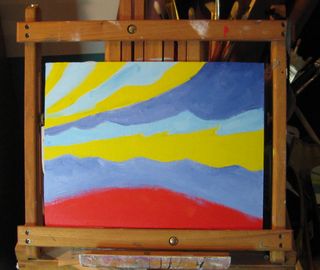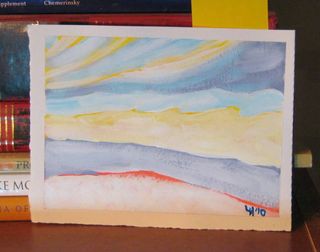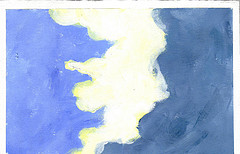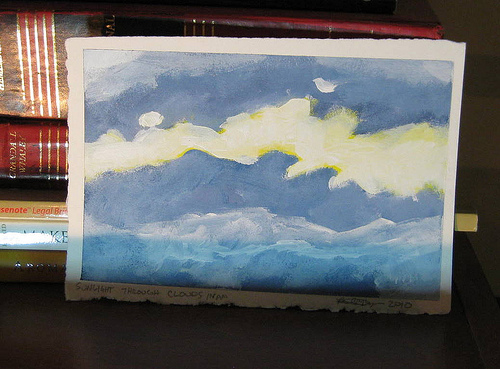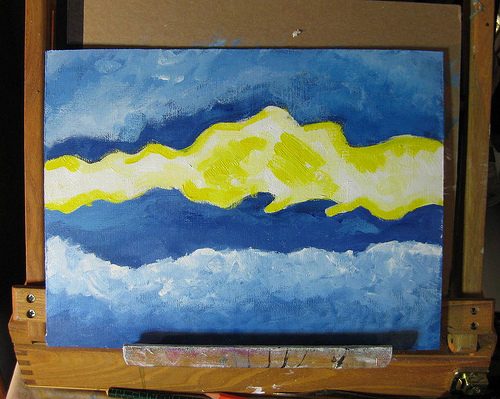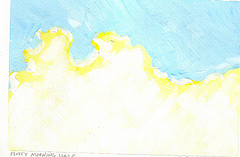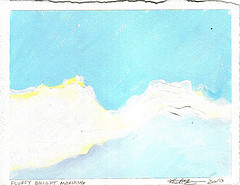I previously showed you the first few steps of this painting. I applied the final layer of paint to it last night. I'm waiting for aday or 2 before I call it complete and sign it. This allows me to think about the piece and get some distance from it. Right now I'm very happy with it. I'm loving the effect the zinc white has on the surfaces of the previous layers of paint and really gives me that atmospheric cloud effect I'm seeking.
From here, the painting will get signed, varnished and gallery (strip) framed. I'll probably have it listed on Artfire later this week or next weekend.
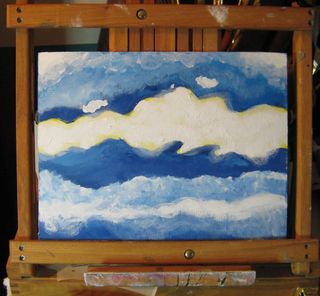
I'm pretty happy with the image. I feel as though I've learned a ton by creating these paintings. My ability to mix the correct shade of blue, purple or warm white has developed over time and I'm getting a feel for brushes that I've never had. I'm confident in my ability to apply paints to my boards and paper in a way I've not been before. In short I feel like these paintings have opened my eyes and mind.
I started a 3rd cloudservation last night too. My process is the same with all of these pieces. I look at my study, look to see what I think works and doesn't work, sketch it to my board, apply intense colors and then apply more layers of color to achieve the right balance of light and dark. So below is my study and the first layer of paint.
